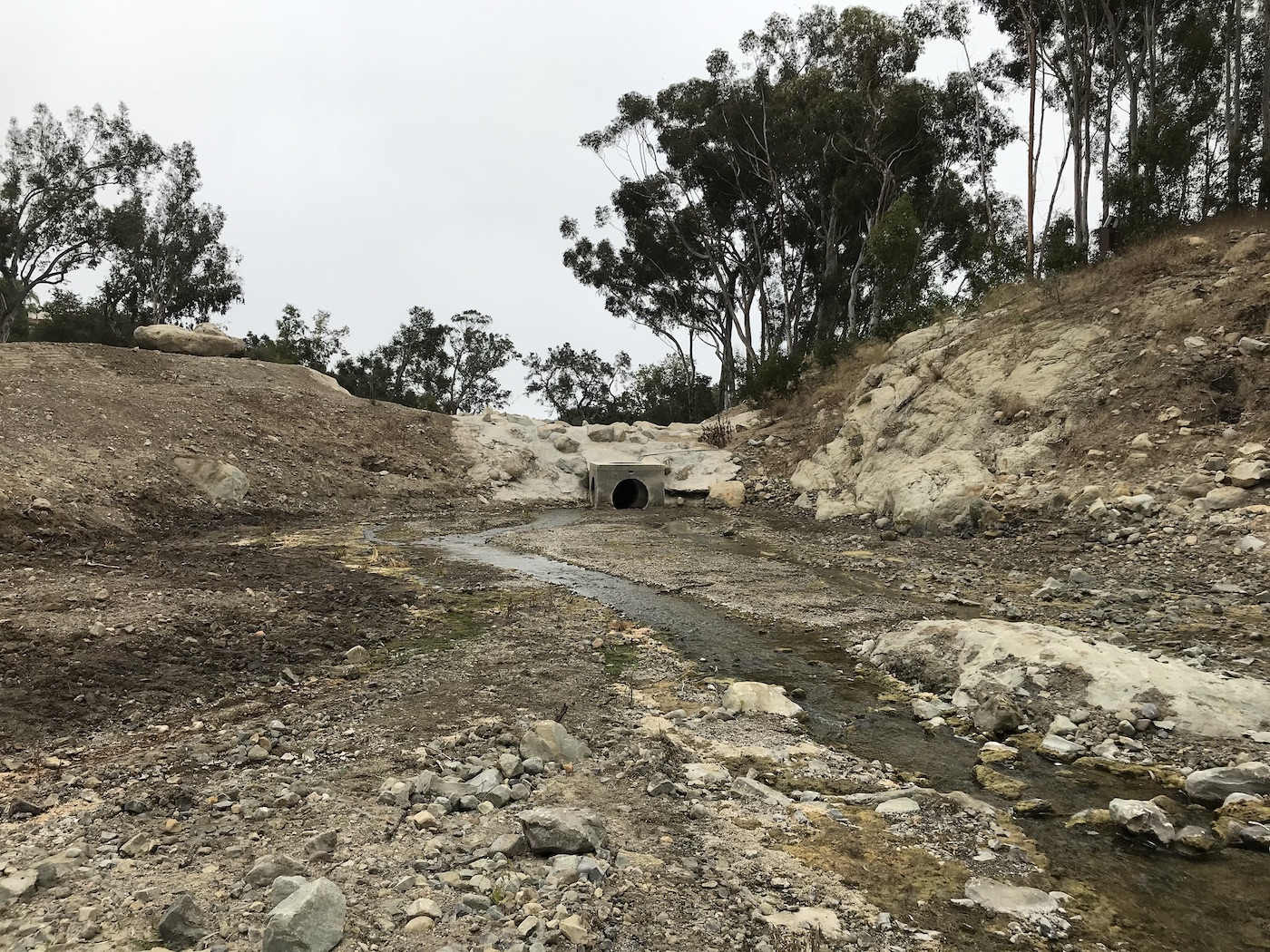Roundup Update

County Responds to Concerns Over Pesticide Spraying in Debris Basins
On August 6, acting on a tip from a reader, the Montecito Journal‘s Kelly Mahan Herrick reported that Santa Barbara County Flood Control employees had been spraying Roundup brand weed killer in the San Ysidro Creek debris basin. Since that article appeared, concerned readers have bombarded the paper with questions about the county’s use of the controversial pesticide. Among the questions they’ve raised:
• How can the County justify spraying a pesticide that has already led to a $10 billion settlement over cancer claims and has been banned by many cities and school districts in California, including both the City of Santa Barbara and the Santa Barbara Unified School District?
• Exactly how much Roundup is being sprayed in the debris basins and how long has this been going on?
• How much Roundup does it take to kill a single plant?
• Why aren’t County workers simply pulling up the weeds by hand?
• Has the County ever informed the public of this policy?
Hoping to get more clarity on these and other questions, the Journal went back to Maureen Spencer, operations and environmental manager for County Flood Control District, for additional answers. Despite public concerns, Spencer continued to defend the County’s use of the herbicide. She said the type of Roundup spray had been specifically approved for aquatic use. But County workers were still trained never to spray the product into the water, but only on plants being targeted for removal. The County does not use the product when it rains. “The crews do not spray during the wet season,” Spencer confirmed.
Spencer declined to state exactly how much Roundup is needed to kill an individual plant. The amount of herbicide required to kill a plant, she explained, is dependent upon a lot of factors, such as the size and species of the plant and even the weather. Hotter weather allows the plants to draw in the pesticide more swiftly. “Crews only apply the amount needed on any given plant, thus being aware not to over-spray or over-apply,” she said.

One reader wanted to know how many gallons of Roundup were used in the San Ysidro Creek debris basin. According to Spencer, in July of this year, exactly 12 ounces of the herbicide was sprayed. How long will that spraying remain effective? “The debris basins below the Thomas Fire [area] will remain vegetation free until the watershed recovers,” she said, in approximately three to five years. And exactly how long has this spraying been going on? “The debris basins have been maintained under the current maintenance program since 1996,” Spencer said.
So why aren’t County workers simply pulling out the weeds by hand? “The hand-pulling of sprouts is not cost-effective,” Spencer said. “Labor costs would sky-rocket, given the number of areas that need to be maintained throughout the county. The controlled and highly regulated use of herbicide is a cost-effective, safe way to control vegetation. The District has spent hundreds of thousands of dollars in the past 10-plus years purchasing equipment and using it to control vegetation in many areas. Limited use of herbicides within debris basins remains an important tool for the District, even though it is used sparingly.”
Responding to concerns about lack of public notification, Spencer said, “notices are posted in public areas.” The lack of signage near the debris basins is because, she said, “Most creeks, with the exception of creeks within County or City Parks, as an example, and all debris basins are not public areas but are rather private property.” So what about our kids and pets potentially being exposed to the chemical? “Accessing creeks outside of public parks (and allowing your dog to enter these areas) is technically trespassing onto private property,” she said.
Despite bans on the use of Roundup in the Santa Barbara area, the County Flood Control District does not currently have any rules governing the use of pesticides. “Many years ago there was quite the discussion on reduction of herbicide countywide,” Spencer said. “The County did a lot of work and the Flood Control District did a lot of work reducing the use of herbicide, buying a mower and doing a lot more mowing in areas where they can. But for us, when we’re talking about creek maintenance, while we have greatly reduced herbicide use, it remains an important tool for us.”
Spencer said there was no alternative to using Roundup, at least not within the County’s weed killing toolshed. “We use a mixture that is approved for aquatic use,” she said. “We have to get permitted by the California Department of Fish & Wildlife to work in the creeks. We use it in a way we think is important and reduces how often we go in the creeks and debris basins, and it’s an important tool. Some people are just going to be against the use of herbicide and nothing will make them think it’s okay, and that’s okay.”





